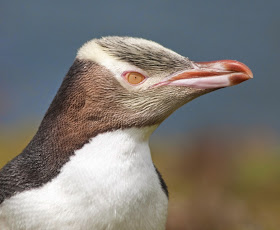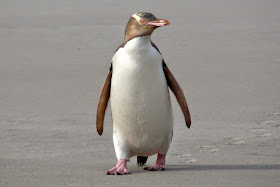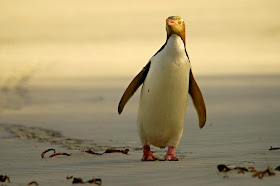Sunday, November 30, 2014
Uguisu
Uguisu Classification and Evolution
The Uguisu is a small species of bird that is natively found throughout Japan, China and Taiwan, along with a number of other regions of the far east. The Uguisu is also commonly known as the Japanese Bush-Warbler, as it is named for it's beautifully distinctive song. The Uguisu is most closely related to other small songbirds including Bushtits and Nightingales which they are similar in appearance too, although the Uguisu is generally very slightly larger. Although they do not sing at night, the beauty of the Uguisu's song is said to have led to them also being known as the Japanese Nightingale. The Uguisu was first described as a documented species by Heinrich von Kittlitz in 1830.
Uguisu Anatomy and Appearance
The Uguisu is a small-sized bird that is known for it's fairly dull colouration, particularly in comparison with the beauty of it's song. They tend to be olive-green or light brown in colour with darker plumage towards the tips of their wings and tail. The tail of the Uguisu is relatively long in relation to it's body size and is comprised of straight feathers, making it similar in appearance to Long-Tailed Tits to which the Uguisu are thought to be closely related. Like other species of small perching bird, the Uguisu also has thin legs with long, clawed toes to help them grip onto branches more easily. The Uguisu has small dark eyes with pale stripes above each one, and a straight, tan coloured beak.
Uguisu Distribution and Habitat
The Uguisu is most commonly inhabits regions throughout Japan where it is found all year round, along with parts of the northern Philippines. The Uguisu is also native to southern Russia, China and Korea and is found in countries including Taiwan on a more seasonal basis. The Uguisu tends to be found in mountainous regions at the varying altitudes of both lowland hills and high up in the mountain forests, and are known to move further down the mountains during the winter. The Uguisu is found in seasonal forests and bamboo thickets where there is plenty of foliage to hide amongst, along with an ample supply of food.
Uguisu Behaviour and Lifestyle
In a similar way to Nightingales, the Uguisu is a relatively solitary bird with individuals only really coming together during the breeding season. The Uguisu is fairly quiet during the winter months making low chirping noises in the bare trees, but in early spring they break into song in order to try and attract a mate. The Uguisu is more heard than seen by many people due to their highly secretive nature, as they spend the majority of the daylight hours hiding deep in the shadows of the surrounding foliage. In some areas, the Uguisu are migratory birds flying between different countries with the changing seasons. This is most commonly to escape from the cold mountain winters, particularly on the large Japanese island of Hokkaido in the north.
Uguisu Reproduction and Life Cycles
The Uguisu breeding season begins in the early spring when the males break into beautiful song in order to try and attract a female to mate with. Like Nightingales, males and females are fairly similar in appearance although the female tends to be slightly smaller in size. The female Uguisu constructs a cup-shaped nest in a dense thicket out of twigs, leaves and moss where she lays up to 5 small eggs. The Uguisu female sits on her eggs to keep them warm and to protect them for between 2 and 3 weeks when the chicks hatch. The Uguisu chicks are fed and cared for by their mother until they fledge at around 2 weeks old. The Uguisu tends to live for between 2 and 5 years in the wild.
Uguisu Diet and Prey
The Uguisu is an omnivorous animal meaning that they feed on a variety of both plants and animals. Like other Warblers and Nightingales, the Uguisu has a predominantly insect-based diet feeding on Flies, Worms, Beetles, Moths and Grasshoppers in the forest. The Uguisu is also known to forage for fruits and berries to supplement it's diet. The need to find food is one reason why the Uguisu migrates in some parts of their natural range. During the winter months, not only is it much colder but the Uguisu also finds it more difficult to find food in such uncompromising conditions. By moving down to the lowlands, there is a higher chance that supper will not be in such short supply.
Uguisu Predators and Threats
The Uguisu is a very distinctive bird and it's calls can be heard throughout the mountainous forests of the far east. Their relatively drab colouration however, means that although the Uguisu can be easily heard they are in fact very difficult for predators to spot amongst the foliage. There are a number of animals that do manage to catch the Uguisu though with it's main predators including feral Cats and Dogs, along with Snakes, Lizards and Birds Of Prey. Uguisu's are also under threat from people who have cut more and more of the natural forest down to make way for growing towns and cities, meaning that the Uguisu has lost much of it's natural habitat.
Uguisu Interesting Facts and Features
The beautiful song of the Uguisu is thought to not only be to do with finding a mate, but it is also thought to be a declaration of territory to other individuals in the area. Oddly enough, the droppings of the Uguisu (known as guano) are now used as a product in certain face creams particularly, as it is thought to make skin softer and more radiant looking. Apparently this peculiar choice in moisturiser is thought to have been used by geishas and kabuki actors throughout Japan for centuries, and it is now sold as a commercial product. The Uguisu is seen as a sign of spring coming in Japan and is therefore also known by other names such as the Spring Bird and the Hanami Bird.
Uguisu Relationship with Humans
Throughout much of it's native Japan, the Uguisu has been depicted in both art and poetry because of the beauty of it's characteristic song. It is also due to this though that they were often kept as cage-birds and would sadly lead a very poor life. Due to the use of their guano as a skin enhancer they are now caged so that it can be more easily collected to ship all around the world. Growing Human settlements, along with land clearance for logging and agriculture, and rising pollution levels have all led to population declines throughout much of the Uguisu's natural range.
Uguisu Conservation Status and Life Today
The Uguisu has been listed on the IUCN Red List as an animal that is classified as Least Concern and is therefore not under imminent threat as a species in it's natural environment. This is because the Uguisu is found in a number of countries at varying altitudes and therefore habitats, and so is fairly widespread. Population numbers in certain areas are also stable, but they are declining in others primarily due to deforestation. They are now farmed in Japan so that their guano can be collected and used as a component in certain creams.
Greenlings
Greenlings have broad spiny pectoral, dorsal and anal fins. They are scavengers but they also eat small fishes and bottom dwelling animals such as crabs.
Gopher Rockfish
Gopher rockfish have a mottled appearance, with dark areas olive to reddish brown, and the lighter area white or pinkish.
4 of the Best Starter Pets for Kids
Any kid would want a pet. Giving them a pet helps them learn about responsibility and respecting life. Most parents are scared to hand an animal to their child because they fear that the child might end up hurting the creature or even themselves. However, with proper education and guidance, you kids can start taking care of a pet.
Fish
Fishes are known to be the best “starter” pet. You won’t have to worry about allergies, scratches and bites. They’re also very easy to take care of and they need little maintenance compared to dogs and cats. Goldfishes are the most common choices. However some fishes, like the Betta or Siamese fighting fish is a better choice since these are very low maintenance and they prefer to be alone. They also don’t require complicated, and sometimes expensive, tank accessories like heaters, filters and aerators. A bowl and stagnant water is all they need.
Reptiles
They may be cold-blooded, but it doesn’t mean that they make bad pets. Reptiles like turtles and tortoises make great pets since they can live as long as a person, and like fish, they’re low maintenance. Russian tortoises, for example, can live to about 50 years and they only need insects and green, leafy veggies. For a more exotic take, you can have iguanas and chameleons as pets, but it’s best when the child is a bit older so they can fully understand the responsibilities and does and don’t when it comes to taking care of these animals. Health wise, they’re also great for kids who have allergies with fur.
Birds
Although they’re more demanding than fishes and turtles, some birds make excellent pets. They’re very intelligent. In fact some species of parrots have the same learning ability as a 3 year old. Birds are also highly sociable and they get along with others very well. However, this does mean that you have to pay close attention to them. Birds like parakeets and canaries are good to start with. If you have some money to spare, more expensive breeds like cockatoos are an option.
Rodents
For those who want something small and fuzzy, rodents like gerbils, guinea pigs, and hamsters are relatively easy to care for. Most of these animals will be fine with small living spaces, and only requires rudimentary care. When buying them in pairs expect them to multiply very fast, so you might want to keep them separated or at least place a boundary between the both of them. Regular and gentle handling helps make them friendlier towards humans. But be warned, these animals do bite when they feel threatened.
Saturday, November 29, 2014
Woolly Monkey
The woolly monkey is a medium to large sized primate, that inhabits the tropical forests of north-west South America. The woolly monkey is most well known for it's round-shaped head and dense fur that covers the body of the woolly monkey.
Woolly monkeys are found throughout Colombia, Ecuador, Peru, Brazil and parts of Venezuela where they live an arboreal lifestyle. Woolly monkeys have long and very strong prehensile tails which allows them to balance and grip onto branches without having to give up the use of their hands.
There are four different species of woolly monkey found in the South American jungles today. These are the brown woolly monkey (also known as the common woolly monkey), the grey woolly monkey, the Columbian woolly monkey and the silvery woolly monkey. All four of the different woolly monkey species are found in the same regions of South America.
The woolly monkey gets its name from its soft and thick, curled fur which ranges from brown to black to grey, depending on the species of woolly monkey. Woolly monkeys have relatively stocky bodies, with powerful shoulders and hips.
Like many other primate species, woolly monkeys live together in fairly large groups known as troops. The woolly monkey troops contain both male woolly monkeys and female woolly monkeys. The woolly monkey troop is also known to split up into smaller groups when it is time to forage for food.
The woolly monkey is an omnivorous animal, meaning that it feeds on both plants and other animals. Fruit is the primary source of food for woolly monkeys, but they will also eat nuts, seeds, leaves, flowers, nectar, insects and even small rodents and reptiles.
Due to their relatively large size, woolly monkeys have few natural predators within their jungle environment. Large birds of prey such as eagles, are the main predators of the young woolly monkeys, and wildcats such as ocelot and jaguars are the main predators of the adult woolly monkeys. The human is also one of the main predators of the woolly monkey as they are hunted for their meat and fur.
The alpha male woolly monkey will mate with the females in his troop. After a gestation period of between 7 and 8 months, the baby woolly monkey is born. Woolly monkeys tend to only have one baby at a time although twins have been known to occur. The baby woolly monkey clings to it's mothers underside, before climbing up onto her back when it is around a week old. The baby woolly monkey is independent and no longer needs it's mother when it is around 6 months old.
Due to deforestation and therefore habitat loss, the woolly monkey population numbers are drastically decreasing, with the woolly monkey now considered to be an animal species that is vulnerable to extinction.
Woolly monkeys are found throughout Colombia, Ecuador, Peru, Brazil and parts of Venezuela where they live an arboreal lifestyle. Woolly monkeys have long and very strong prehensile tails which allows them to balance and grip onto branches without having to give up the use of their hands.
There are four different species of woolly monkey found in the South American jungles today. These are the brown woolly monkey (also known as the common woolly monkey), the grey woolly monkey, the Columbian woolly monkey and the silvery woolly monkey. All four of the different woolly monkey species are found in the same regions of South America.
The woolly monkey gets its name from its soft and thick, curled fur which ranges from brown to black to grey, depending on the species of woolly monkey. Woolly monkeys have relatively stocky bodies, with powerful shoulders and hips.
Like many other primate species, woolly monkeys live together in fairly large groups known as troops. The woolly monkey troops contain both male woolly monkeys and female woolly monkeys. The woolly monkey troop is also known to split up into smaller groups when it is time to forage for food.
The woolly monkey is an omnivorous animal, meaning that it feeds on both plants and other animals. Fruit is the primary source of food for woolly monkeys, but they will also eat nuts, seeds, leaves, flowers, nectar, insects and even small rodents and reptiles.
Due to their relatively large size, woolly monkeys have few natural predators within their jungle environment. Large birds of prey such as eagles, are the main predators of the young woolly monkeys, and wildcats such as ocelot and jaguars are the main predators of the adult woolly monkeys. The human is also one of the main predators of the woolly monkey as they are hunted for their meat and fur.
The alpha male woolly monkey will mate with the females in his troop. After a gestation period of between 7 and 8 months, the baby woolly monkey is born. Woolly monkeys tend to only have one baby at a time although twins have been known to occur. The baby woolly monkey clings to it's mothers underside, before climbing up onto her back when it is around a week old. The baby woolly monkey is independent and no longer needs it's mother when it is around 6 months old.
Due to deforestation and therefore habitat loss, the woolly monkey population numbers are drastically decreasing, with the woolly monkey now considered to be an animal species that is vulnerable to extinction.
West Indian Ocean coelacanth
West Indian Ocean coelacanth are rare order of vertebrates closely related to lungfish, reptiles, and mammals.
Friday, November 28, 2014
Yellow-Eyed Penguin
The yellow-eyed penguin is one of the few penguin species found north of the Antarctic Ocean, and as it's name suggests, this species of penguin is easily idenitfied by it's yellow coloured eyes and bright yellow band that runs from it's eyes round the back of the yellow-eyed penguin's head.
The yellow-eyed penguin is found off the coast of the south island of New Zealand where this species gathers in colonies along the beaches and boulder fields. The yellow-eyed penguin is also found on a few of the islands of the main island including Stewart, Auckland and the Campbell Islands.
The yellow-eyed penguin generally searches for food up 10 miles offshore, and travels (on average) around 15 miles away from the colonies nesting site. The yellow-eyed penguin leaves the colony at dawn and returns the same evening during chick rearing, although may spend several days at sea at other times.
The yellow-eyed penguin is one of the larger species of penguin with adult individuals reaching 75cm in height, with the males generally being slightly larger than the female yellow-eyed penguins. The yellow-eyed penguin was thought to have been closely related to the tiny little penguin found in a similar area, although recent research suggests that the two are actually fairly genetically different.
The yellow-eyed penguin is a carnivorous animal, that like all other penguin species, survives on a diet that is only comprised of marine animals. Krill and small crustaceans make up the bulk of the yellow-eyed penguin's diet along with larger organisms including squid and various species of fish.
The yellow-eyed penguin is usually found nesting in the forests and scrub that line the New Zealand coast and although historically undisturbed, the yellow-eyed penguin now has a number of land-dwelling predators including cats, dogs and foxes along with rats and weasels that hunt their eggs.
On average, the yellow-eyed penguin breeds once a year, forming pairs that usually remain faithful to one another. The female yellow-eyed penguin lays two eggs in her nest in the forest which are incubated by both parents for up to a couple of months, when only one of the eggs will usually hatch. The yellow-eyed penguin chicks are fed and kept warm by their parents and remain with them until the chicks are nearly a year old.
Today, the yellow-eyed penguin listed as an endangered animal with an estimated wild population of less than 4,000 individuals. It is now the rarest penguin in the world due to deforestation and the introduction of mammalian predators.
The yellow-eyed penguin is found off the coast of the south island of New Zealand where this species gathers in colonies along the beaches and boulder fields. The yellow-eyed penguin is also found on a few of the islands of the main island including Stewart, Auckland and the Campbell Islands.
The yellow-eyed penguin generally searches for food up 10 miles offshore, and travels (on average) around 15 miles away from the colonies nesting site. The yellow-eyed penguin leaves the colony at dawn and returns the same evening during chick rearing, although may spend several days at sea at other times.
The yellow-eyed penguin is one of the larger species of penguin with adult individuals reaching 75cm in height, with the males generally being slightly larger than the female yellow-eyed penguins. The yellow-eyed penguin was thought to have been closely related to the tiny little penguin found in a similar area, although recent research suggests that the two are actually fairly genetically different.
The yellow-eyed penguin is a carnivorous animal, that like all other penguin species, survives on a diet that is only comprised of marine animals. Krill and small crustaceans make up the bulk of the yellow-eyed penguin's diet along with larger organisms including squid and various species of fish.
The yellow-eyed penguin is usually found nesting in the forests and scrub that line the New Zealand coast and although historically undisturbed, the yellow-eyed penguin now has a number of land-dwelling predators including cats, dogs and foxes along with rats and weasels that hunt their eggs.
On average, the yellow-eyed penguin breeds once a year, forming pairs that usually remain faithful to one another. The female yellow-eyed penguin lays two eggs in her nest in the forest which are incubated by both parents for up to a couple of months, when only one of the eggs will usually hatch. The yellow-eyed penguin chicks are fed and kept warm by their parents and remain with them until the chicks are nearly a year old.
Today, the yellow-eyed penguin listed as an endangered animal with an estimated wild population of less than 4,000 individuals. It is now the rarest penguin in the world due to deforestation and the introduction of mammalian predators.

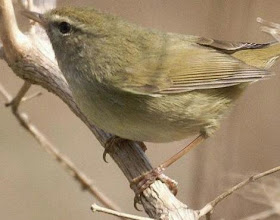
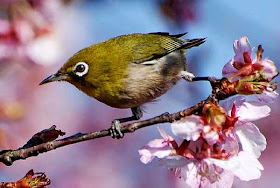
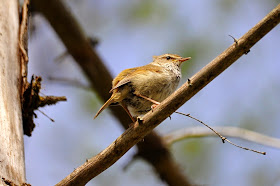
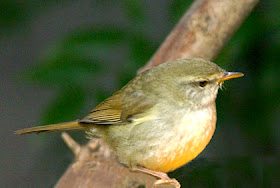






















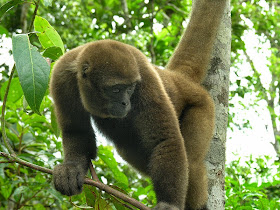
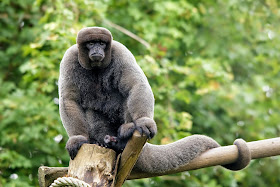
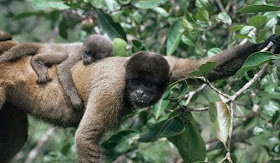
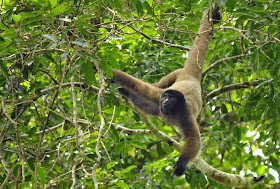










.jpg)






